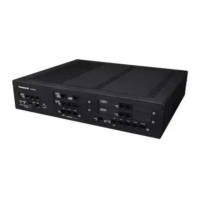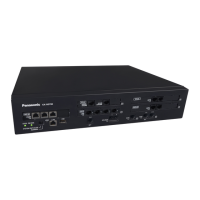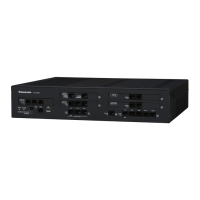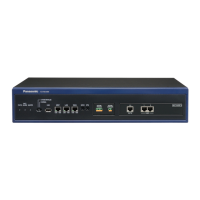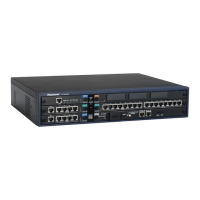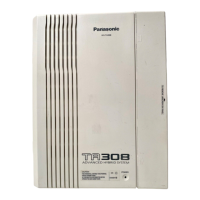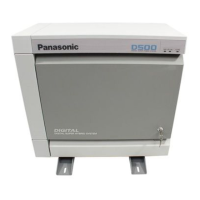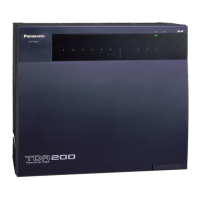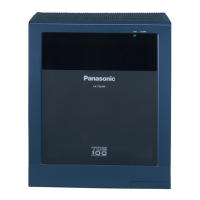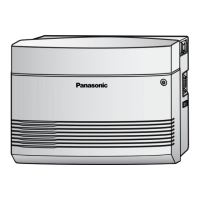5.5.2 PC Programming
Description
This PBX can be programmed and administered using a PC. There are two programming methods:
1. On-site Programming: System programming/diagnosis can be performed locally by connecting a PC to
the PBX directly.
2. Remote
Programming: System programming/diagnosis and data upload can be performed from a remote
location.
1. On-site Programming:
Method Description
Using the LAN interface Available via the LAN port of the MPR card.
Using a modem through
an SLT port
*1
An RMT
card must be installed. Assign the floating extension number
of the analogue remote maintenance (default: 599), and dial this
number from the PC to connect to the PBX.
Using an ISDN TA
interface (64 kbps)
through an ISDN
Extension Line
*1
Assign the floating extension number of the ISDN remote
maintenance (default: 699), and dial this number from the PC to
connect to the PBX. The RMT card is not required for this method.
This method is available only when a user
-supplied ISDN TA that
supports CAPI is used.
*1
If remote access is disabled through system programming, then this on site programming cannot be done.
2. Remote Programming:
Method Description
Using a modem (RMT card) An RMT card must be installed. The floating extension number of
the
analogue remote maintenance must be assigned (default: 599).
PC programming, using a telephone connected in parallel with the
modem, can be done in the following ways:
• Direct Access
Dial the DIL/DID/DDI number whose destination is the floating
extension number of the analogue remote maintenance.
• Through DISA
Dial the floating extension number of the analogue remote
maintenance using the DISA feature. (® 2.16.1 Direct Inward
System Access (DISA))
• Call Transfer
Call an extension (probably the operator), and request a transfer
to the floating extension number of the analogue remote
maintenance. (® 2.12.1 Call Transfer)
Using an ISDN TA interface
(64 kbps) through an ISDN
Trunk
The floating extension number of the ISDN remote maintenance
must be assigned (default: 699), and dial the DIL/DID/DDI number
whose destination is the floating extension number of the ISDN
remote
maintenance. The RMT card is not required for this method.
This method is available only when an user-supplied ISDN TA that
supports CAPI is used.
There are three levels of authorisation for programming the PBX, where each level controls which settings the
programming is allowed to access and change. The three levels are as follows:
526 Feature Guide
5.5.2 PC Programming
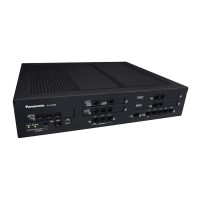
